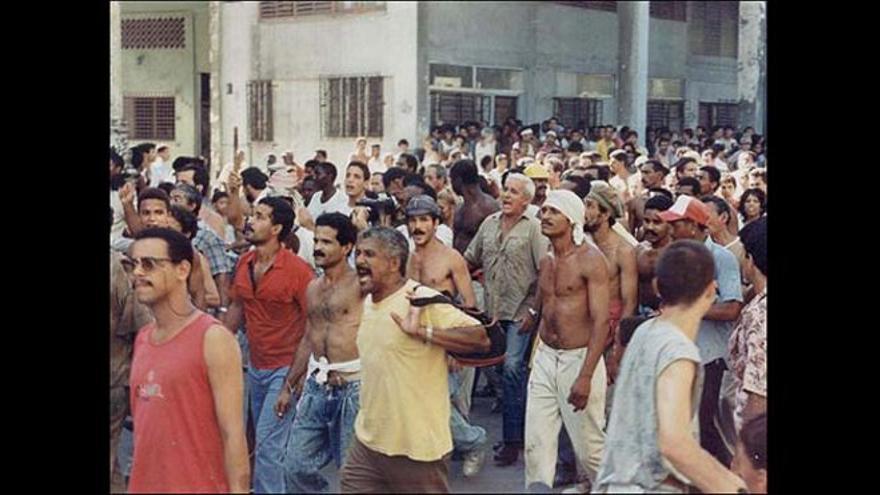
![]() 14ymedio, Reinaldo Escobar, Desde Aqui, Havana, August 5, 2021 — The popular program Escriba y Lea [Write and Read] familiarized viewers with one of the most delicate operations a historian can make: dating the beginning and end of an era. When the panelists had to figure out, sometimes by guessing, the historical fact or character suggested in a riddle, they first asked questions such as whether it was before or after the French Revolution. Or if it was post WWII. Knowing the time period, they figured out the answer.
14ymedio, Reinaldo Escobar, Desde Aqui, Havana, August 5, 2021 — The popular program Escriba y Lea [Write and Read] familiarized viewers with one of the most delicate operations a historian can make: dating the beginning and end of an era. When the panelists had to figure out, sometimes by guessing, the historical fact or character suggested in a riddle, they first asked questions such as whether it was before or after the French Revolution. Or if it was post WWII. Knowing the time period, they figured out the answer.
The formula relied on a wide variety of jokes, especially those that mocked events celebrated in official propaganda: Before the ration book? After the Special Period? In the chocolate milk era?
In conversations in which different generations overlap, confusion often arises about what is meant by “before.”
For the septuagenarians, “before” means anything prior to 1959. Up until the late 1970s, if you wanted to find out where dissimilar objects of a certain quality had come from — a lamp, a skirt, a kitchen gadget — you had to first find out if it was “from somewhere else” or “from before.” If the object was said to be “from here” or “from now,” this was not necessary because, by then, everything came from the rationed market. What was “from before” was held in the same esteem as what came “from somewhere else.”
Those born in the the new age of “Revolution” reached adulthood in the 1980s. They saw the dawn of “liberated” markets, were moved by Nueva Trova songs and enjoyed the benefits of what was commonly known in its heyday as “the Soviet pipeline.” They were also the ones who filled the boats fleeing the port of Mariel, those who were victims or perpetrators of acts of repudiation.
Twenty-seven years have passed since the Maleconazo, the Malecón uprising, a watershed event that took place on August 5, 1994. Those who were not old enough to participate, or who had not yet been born, are today in the under-35 age range, when one can still be considered unquestionably young.
How many protestors from that uprising remain on the island today? How many are still alive? Surely, a few of them took to the streets on July 11.
Those who did have earned the right to measure historical time in a new way: before or after July 11.
____________
COLLABORATE WITH OUR WORK: The 14ymedio team is committed to practicing serious journalism that reflects Cuba’s reality in all its depth. Thank you for joining us on this long journey. We invite you to continue supporting us by becoming a member of 14ymedio now. Together we can continue transforming journalism in Cuba.
